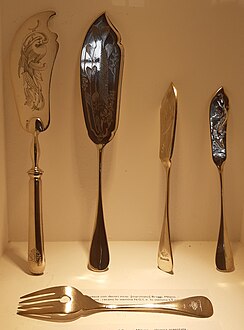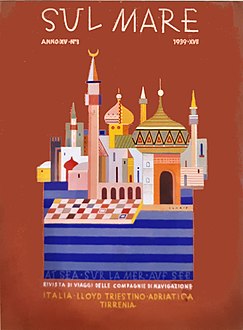
SS Conte di Savoia was an Italian ocean liner built in 1932 at the Cantieri Riuniti dell'Adriatico, Trieste.

SS Rex was an Italian ocean liner launched in 1931. She held the westbound Blue Riband between 1933 and 1935. Originally built for the Navigazione Generale Italiana (NGI) as SS Guglielmo Marconi, its state-ordered merger with the Lloyd Sabaudo line meant that the ship sailed for the newly created Italia Flotta Riunite.

Evergreen Marine Corporation is a Taiwanese container transportation and shipping company that is headquartered in Luzhu District, Taoyuan City, Taiwan. With over 150 container ships, it is part of the Evergreen Group conglomerate of transportation firms and associated companies.
Italian Line and from 1992 Italia Line, whose official name was Italia di Navigazione S.p.A., was a passenger shipping line that operated regular transatlantic services between Italy and the United States, and Italy and South America. During the late 1960s the company turned to running cruises, and from 1981 it became a global freight operator.

Italia Marittima S.p.A., from 1919 until 2006 called Lloyd Triestino, founded as Österreichischer Lloyd in 1833, is a shipping company with its head office in Trieste, Italy, and run by Evergreen Marine Corporation.

SS Galileo Galilei was an ocean liner built in 1963 by Cantieri Riuniti dell' Adriatico, Monfalcone, Italy for Lloyd Triestino's Italy–Australia service. In 1979, she was converted to a cruise ship, and subsequently sailed under the names Galileo and Meridian. She sank in the Strait of Malacca in 1999 as the Sun Vista.
SS Audacious was the former Italian cargo ship Belvedere taken over by the United States during World War II and sunk as a blockship at Omaha Beach on 8 June 1944. Belvedere was built in Trieste and first operated as a passenger and cargo ship when the city and company were part of Austro-Hungarian Empire. After World War I the city and ship, converted to cargo in the early 1920s, became Italian. In 1941 Belvedere was in Philadelphia when foreign ships of Axis powers were interned and then seized. The ship was taken over for operation by the War Shipping Administration through agents until scuttled at Omaha Beach.
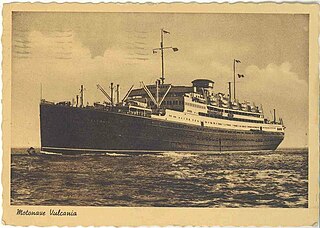
The MS Vulcania was an Italian ocean liner built by Cantiere Navale Triestino, Monfalcone, northern Italy, in 1926 for the Italian company, Cosulich Line.
Stabilimento Tecnico Triestino (STT) ("Technical Establishment of Trieste") was a private shipbuilding company based in Trieste from the mid-19th to early 20th century, and the most important naval shipbuilding firm of the Austro-Hungarian Empire.

Conte Verde was an Italian ocean liner active in the early 20th century.

The Lloyd Sabaudo was a Shipping transport line formed in Turin in 1906. It began passenger service in 1907, expanding to link Italy to ports in Asia as well as North and South America. In 1932 it merged with several other Italian shipping lines to form the Italian Line.

The Cosulich Line, formally the Cosulich Societa Triestina di Navigazione, is a steamship line that was based in Trieste, Italy. The company had been founded in 1889 by Antonio F. Cosulich's son as a family business. In 1903 as Unione Austriaca di Navigazione, more commonly called the Austro-American or Austro-Americana Line, when Trieste was under the rule of Austria-Hungary. After the first World War, the company became an Italian-based shipping company. In 1932 the company was forced to merge with the Lloyd Sabaudo and the Navigazione Generale Italiana, to form the Italian Line.
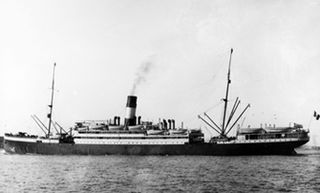
SS Taormina was a transatlantic ocean liner that was launched in Scotland in 1907 for an Italian shipping line. She was owned successively by Italia Società di Navigazione a Vapore, Lloyd Italiano and Navigazione Generale Italiana (NGI). Taormina was briefly chartered as a troop ship for the US Armed Forces in 1918. She was scrapped in 1929.

MS Augustus was a combined ocean liner and cruise ship built in 1927 for Navigazione Generale Italiana. The ship was later transferred to the new Italian Line after the merger of Navigazione Generale Italiana. During World War 2 the Roma was converted into an aircraft carrier and renamed as Falco. In 1944, both ships were taken over by the German troops but, on 25 September of that year she was scuttled. After the war she was raised and scrapped in 1946. sister ship was SS Roma.
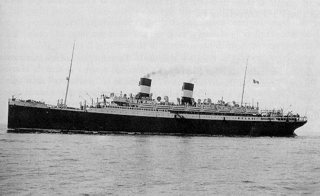
SS Roma was an ocean liner built for the Italian shipping company Navigazione Generale Italiana of Genoa by Ansaldo shipyard in Sestri Ponente. She was the sister ship to MS Augustus. The ship was later transferred to the new Italian Line after the merger of Navigazione Generale Italiana. When Second World War broke out, she was acquired by the Navy for Conversion to aircraft carrier name Aquila. She was taken over by the German occupation forces in 1943 but was partially scuttled by Italians. She was raised and scrapped in 1951.

SS Duilio was the first Italian super ocean liner and one of the largest Italian merchant ships until 1925. She measured 24,281 gross register tons and was the sister of the SS Giulio Cesare, which was launched in 1921. She was constructed for the Italian shipping company “Navigazione Generale Italiana” based in Genoa and constructed by Ansaldo Shipyard owned by Sestri Ponente. She was sunk on 10 July 1944.
Savoia was a 5,490 ton refrigerated cargo ship which was built in 1922. She was captured by the Royal Navy in 1941 and renamed Empire Arun. In 1947 she was sold and renamed Granlake. Further name changes were Dryad in 1949, Shiranesan Maru in 1951 and Dainichi Maru in 1962. She was scrapped in 1968.

Österreichischer Lloyd was the largest Austro-Hungarian shipping company. It was founded in 1833. It was based at Trieste in the Austrian Littoral, the main port of the Cisleithanian (Austrian) half of the Dual Monarchy.
SS Verona was a transatlantic ocean liner that was built in Ireland in 1908 for an Italian shipping line. She was a troop ship in the Italo-Turkish War of 1911–12 and in the First World War in 1917–18. In 1918 a German submarine sank her in the Mediterranean with great loss of life.

The SS Kaiser Franz Joseph I was a Austro-Hungarian passenger liner built by Cantiere Navale Triestino for the Austro-American line. After her launching, in February 1912 the steamer was put into service and she set off from Trieste to Buenos Aires. During World War 1 the ship was laid up in Trieste, but was commissioned by the Italian navy after the war. the Kaiser Franz Joseph I now the Presidente Wilson of the Cosulich Line, was sold to other Italian company until World war 2 happened. During The war she was commissioned by the Italians navy once again and was laid up in La Spezia in 1943. On May 12, 1944, as the Allies Advance to Italy the ship was Scuttled by the Germans to pervert capture. Her wreck was raised and scrapped in 1949.


